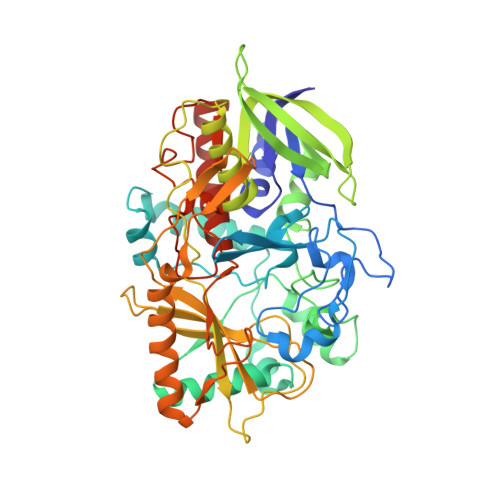Production and characterization of recombinant perdeuterated cholesterol oxidase.
Golden, E., Attwood, P.V., Duff, A.P., Meilleur, F., Vrielink, A.(2015) Anal Biochem 485: 102-108
- PubMed: 26073659
- DOI: https://doi.org/10.1016/j.ab.2015.06.008
- Primary Citation of Related Structures:
4XWR, 4XXG - PubMed Abstract:
Cholesterol oxidase (CO) is a FAD (flavin adenine dinucleotide) containing enzyme that catalyzes the oxidization and isomerization of cholesterol. Studies directed toward elucidating the catalytic mechanism of CO will provide an important general understanding of Flavin-assisted redox catalysis. Hydrogen atoms play an important role in enzyme catalysis; however, they are not readily visualized in protein X-ray diffraction structures. Neutron crystallography is an ideal method for directly visualizing hydrogen positions at moderate resolutions because hydrogen and deuterium have comparable neutron scattering lengths to other heavy atoms present in proteins. The negative coherent and large incoherent scattering lengths of hydrogen atoms in neutron diffraction experiments can be circumvented by replacing hydrogen atoms with its isotope, deuterium. The perdeuterated form of CO was successfully expressed from minimal medium, purified, and crystallized. X-ray crystallographic structures of the enzyme in the perdeuterated and hydrogenated states confirm that there are no apparent structural differences between the two enzyme forms. Kinetic assays demonstrate that perdeuterated and hydrogenated enzymes are functionally identical. Together, structural and functional studies indicate that the perdeuterated protein is suitable for structural studies by neutron crystallography directed at understanding the role of hydrogen atoms in enzyme catalysis.
Organizational Affiliation:
School of Chemistry and Biochemistry, University of Western Australia, Crawley, WA 6009, Australia.















